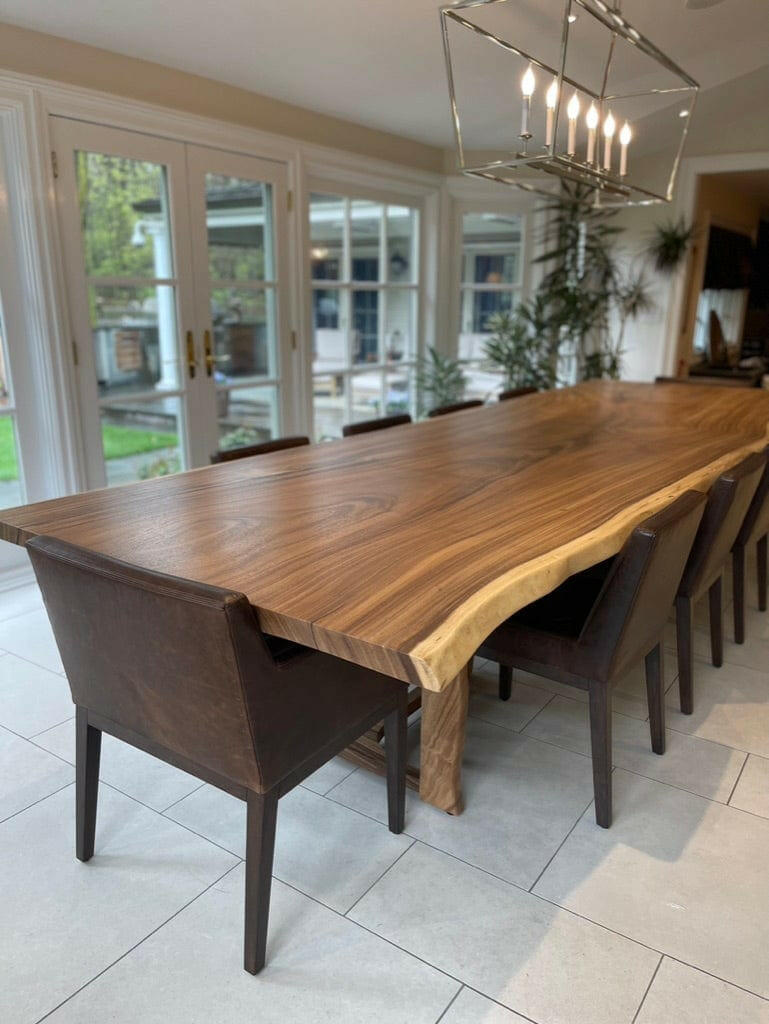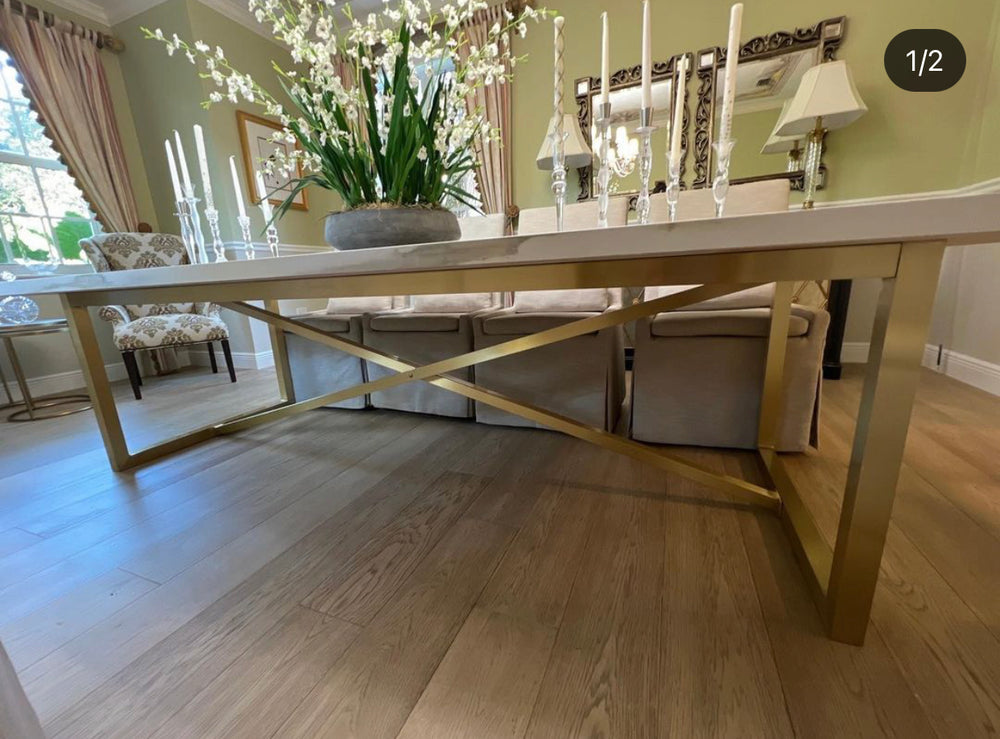Dining Room Table Legs That Combine Performance and Modern Layout
Wiki Article
A Detailed Consider Table Leg Styles: Discovering the Suitable Match
Selecting the appropriate table leg style is essential for both aesthetic allure and functional performance. Conventional 4 legs offer timeless style and stability, while the pedestal base gives boosted legroom and a modern appearance. For those with bigger tables, trestle legs guarantee sturdy assistance, whereas hairpin legs present a mid-century contemporary ambiance with their minimalist layout. The x-shaped legs mix contemporary design with enhanced security. Each of these choices brings unique advantages, making the choice extra than just an issue of preference. Discover even more to uncover which style perfectly matches your eating room and way of life.Standard 4 Legs
Among the different sorts of dining table leg styles, the conventional four-leg style continues to be an ageless choice for numerous families. This timeless arrangement offers an unified blend of capability and looks, making it a seasonal fave. Four legs give balanced support, making sure the table stays stable and with the ability of bearing considerable weight. This is especially helpful for families that regularly organize large gatherings or use their table for numerous objectives, such as job or crafting.From an aesthetic perspective, the traditional four-leg design can be conveniently adjusted to different interior designs. Whether crafted from wood, metal, or a combination of products, these legs can be delicately carved, sleek and minimalistic, or anything in between. Their versatility permits them to enhance both rustic and modern settings seamlessly.
In addition, the uncomplicated structure of the four-leg layout helps with convenience of movement and positioning within a room. Unlike even more complicated bases, this design minimizes blockages, offering ample legroom for restaurants. In summary, the typical four-leg dining table leg style weds withstanding elegance with sensible performance, making it a sharp option for those seeking both type and function in their eating furnishings.
Pedestal Base
Often celebrated for its elegant and space-efficient layout, the stand base is a prominent option to the typical four-leg arrangement in dining table leg designs. This distinctive base generally features a single central column sustaining the tabletop, which can differ in form, from ornately sculpted wood to streamlined, modern steel. Among the primary benefits of the stand base is its capability to make the most of legroom and seating adaptability. Without edge legs, diners are paid for better flexibility of activity, making it an optimal selection for round and oblong tables that promote more intimate and comprehensive events.The central column itself offers a canvas for intricate styles and creative expressions, adding a component of aesthetic interest under the table. In recap, the stand base combines capability with style, making it a refined and sensible choice for diverse eating environments.
Trestle Legs
Trestle legs give a durable and timeless structure for dining tables, defined by their straight cross-bracing use this link and tough support beam of lights. Stemming from middle ages times, this layout has developed yet kept its essential structure, making it a seasonal favorite in both conventional and modern setups. The central trestle beam, usually supported by 2 or more upright posts, uses outstanding security, allowing for larger table sizes without the need for extra legs.A considerable advantage of trestle leg tables is the adequate legroom they offer. Unlike tables with four edge legs, the lack of obstructions at the table's edges provides unobstructed room for chairs and diners, improving convenience and accessibility. This makes trestle tables suitable for fitting bigger gatherings, whether in a dining-room or a reception hall.
The aesthetic flexibility of trestle legs is significant. Offered in a range of products such as timber, metal, and composite, they can be finished to match a wide variety of indoor styles. From rustic farmhouse to sleek contemporary styles, trestle legs can be tailored to match specific tastes. Their enduring charm and practical advantages make trestle legs an engaging selection for those seeking both design and usefulness in their table.
Hairpin Legs

The appeal of hairpin legs depends on their simplicity and adaptability - dining room table legs. Readily available in a variety of materials, consisting of steel and brass, they can be finished in many shades to complement different indoor designs. Whether coupled with a rustic wooden table top or a modern glass surface, hairpin legs effortlessly mix performance with a touch of vintage charm
Toughness is an additional noteworthy feature of barrette legs. In spite of their delicate appearance, these legs are crafted to bear considerable weight, guaranteeing the eating table remains stable and safe. In addition, they are reasonably very easy to install, making them a prominent option for do it yourself fanatics and professional furniture makers alike.
X-Shaped Legs

Created from materials such as steel, wood, or a combination of both, X-shaped legs can be customized to match different design preferences. Steel legs often provide a streamlined and industrial feeling, perfect for loft-style houses and modern-day eating spaces. On the various other hand, wood X-shaped legs offer a warmer, a lot more rustic appeal, ideal for farmhouse or diverse interiors. The adaptability in products allows property owners to tailor their table to better fit their general layout system.
Additionally, the design behind X-shaped legs ensures even weight distribution, decreasing the risk of wobbling and enhancing sturdiness. This makes them specifically fit for bigger eating tables that require added assistance. In significance, X-shaped legs mix sensible design with modern-day aesthetics, making them a timeless option for varied eating settings.
Verdict
A thorough understanding of eating table leg designs exposes the distinct qualities and benefits of each design. Traditional 4 legs supply security and ageless appeal, while stand bases offer legroom and a streamlined look. Trestle legs make certain durable support for larger tables, and hairpin legs introduce a mid-century modern visual. X-shaped legs integrate Get the facts contemporary design with boosted security. Selecting the appropriate leg design makes certain both practical and visual satisfaction in any kind of eating space.Report this wiki page